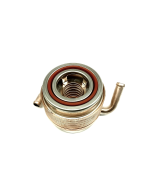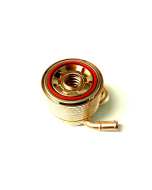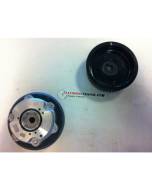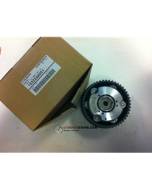We use cookies to make your experience better. To comply with the new e-Privacy directive, we need to ask for your consent to set the cookies. Learn more.
What do you need to know if you have had a bearing failure?

If you have had an engine failure in your Subaru, and it has been diagnosed as a bearing failure, there are a few key pieces of information that you need to know.
First, what is a bearing failure?
A bearing failure (aka rod bearing failure, rod knock, thrown rod, etc.) means that the crank has physically come into contact with the bearing to the extent that it has started to quickly wear the bearing down. In the process of doing this, material from the bearing has been sent through the engine via the oil supply.
The main issue with a bearing failure is the metal contamination that gets sent through the engine. In the process of re-building your engine each and every part that is a part of the oiling system needs to be thoroughly inspected and cleaned. If you can't be 100% sure that you can clean and remove all of the bearing material from a part, then it needs to be replaced.
When you are working with a Turbo Subaru engine, there are a few parts that oil comes into contact with that are difficult enough to clean properly, we recommend replacing them rather than to attempt cleaning. These are the oil cooler that sits between the oil filter and block, and if your car has AVCS (or Dual AVCS on the 2008+ STI), then you would want to replace the AVCS pulleys too. Both of these parts have oil flowing through them, and they also have large spaces where the oil sits that can accumulate metal particles.
It is worth noting that the AVCS Pulleys look like they can be disassembled and cleaned, but Subaru considers them a non-serviceable part. The gasket on the back is not available separately, and it turns out that the two halves of the pulley also have to be precisely oriented as they go back together, otherwise your AVCS will not work properly on that cam.
It is also a best practice to replace the AVCS Solenoids (especially the exhaust AVCS solenoids on a 2008+ STI) and the banjo bolts with the screens that are part of the AVCS lines for the same reasons.
Other parts like the oil pan, turbo, and cylinder heads can usually be cleaned, but again, you have to be very thorough and make sure that there is no metal contamination left if you are going to re-use the parts.
It would also be recommended to replace your oil-pump after you have had a bearing failure. The oil pump rotor, or relief valve can be damaged by contamination, and it is not worth the risk to a new engine to put on an old pump. Remember that the oil flows up to the oil pump, and through it to the filter, so the pump can be damaged very quickly from contamination.
As long as you keep all this in mind as you are going through your engine, your re-build should go smoothly, but if you are ever in doubt, it is always worth working with a good shop to make sure that no contaminated or damaged parts are moved over to your new engine.
- Jon Cooley





